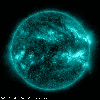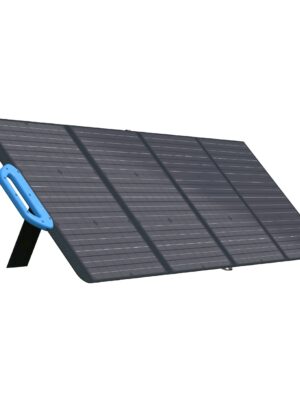Rare quadruple solar flare event captured by NASA Leave a comment
Earlier this week, NASA’s Solar Dynamics Observatory (SDO) recorded a rarely seen event—four nearly-simultaneous flare eruptions involving three separate sunspots, as well as the magnetic filament between them. But as impressive as it is, the event could soon pose problems for some satellites and spacecraft orbiting Earth, as well as electronic systems here on the ground.
It may seem like a massive ball of fiery, thermonuclear chaos, but there’s actually a fairly predictable rhythm to the sun. Similar to Earth’s seasonal changes, the yellow dwarf star’s powerful electromagnetic fluctuations follow a roughly 11-year cycle of ebbs and flows. Although astronomers still aren’t quite sure why this happens, it’s certainly observable—and recent activity definitely indicates the sun is heading towards its next “solar maximum” later this year.
As Spaceweather.com notes, early Tuesday morning’s “complex quartet” of solar activity was what’s known as a “super-sympathetic flare,” in which multiple events occur at nearly the same time. This happens thanks to the often hard-to-detect magnetic loops spreading across the sun’s corona, which can create explosive chain reactions in the process. In this case, hundreds of thousands of miles separated the three individual flares, but they still erupted within minutes of each other. All-told, the super-sympathetic flare encompassed about a third of the sun’s total surface facing Earth.
[Related: Why our tumultuous sun was relatively quiet in the late 1600s]
And that “facing Earth” factor could present an issue. BGR explains “at least some” of the electromagnetic “debris” could be en route towards the planet in the form of a coronal mass ejection (CME). If so, those forces could result in colorful auroras around the Earth’s poles—as well as create potential tech woes for satellite arrays and orbiting spacecraft, not to mention blackouts across some radio and GPS systems. The effects, if there are any, are estimated to occur over the next day or so, but at least they’re predicted to only be temporary inconveniences.
Luckily, multi-flare situations like this week’s aren’t a regular occurrence—the last time something similar happened was back in 2010 in what became known as the Great Eruption.
[Related: Hold onto your satellites: The sun is about to get a lot stormier]
Still, these super-sympathetic flares serve as a solid reminder of just how much of our modern, electronically connected society is at the sun’s mercy. As recently as 2022, for example, a solar storm knocked around 40 Starlink satellites out of orbit. The risk of solar-induced problems will continue to rise as the skies grow increasingly crowded.
While many companies continue to construct redundancy programs and backup systems for these potential headaches, astronomers and physicists still can’t predict solar activity very accurately. More research and funding is needed to create early warning and forecasting programs.
This year alone has already seen at least two other solar activity events—and seeing as how we still haven’t passed the solar maximum, more impressive (and maybe damaging) activity is likely on the way.
Please Support Our Sponsors
Solar Power Generator Discounts Along With Free Shipping
- 10% OFF for Jackery Solar Generator 2000 Pro Series with code "JADEAL"
- 10% OFF for Jackery SolarSaga 200W Solar Panel with code "JADEAL"
- 10% OFF for Jackery Solar Generator 1500 Series with code "JADEAL"
- 10% OFF for Jackery Solar Generator 1000 Series with code "JADEAL"
- 10% OFF for Jackery Explorer 1500 Portable Power Station with code "JADEAL"
- 10% OFF for Jackery Explorer 1000 Pro Portable Power Station with code "JADEAL"
- 10% OFF for Jackery Explorer 500 Pro Portable Power Station with code "JADEAL"
- 10% OFF for Jackery Explorer 300 Pro Portable Power Station with code "JADEAL"
- 10% OFF for Jackery SolarSaga 100W Solar Panel with code "JADEAL"

The University of Georgia is represented by the Georgia Bulldogs . The Bulldogs participate in the Southeastern Conference's (SEC) Eastern Division of the NCAA.
They play their home games in the storied Sanford Stadium in Athens, Georgia. The first season in Georgia was in 1892. In 1942, 1980, and 2021, the Georgia Bulldogs won three national championships.
The Georgia Bulldogs have additionally been crowned the National Champion in four additional seasons by at least one polling organization (1920, 1927, 1946 and 1968).
The Georgia Bulldogs are tied for second place in conference history with their 15 conference titles, including 13 SEC titles, and their 59 bowl appearances, which ranks second all-time.
In addition, the program has produced five top picks in the National Football League (NFL) draft, two Heisman Trophy winners, numerous winners of various national honors, and many others.

Longhorns football represents the University of Texas in Austin often known as Texas, UT or the Texas Longhorns. The Longhorns represent the Big 12 Conference in the NCAA Division. They play in Austin, Texas, at the Darrell K. Royal-Texas Memorial Stadium.
The Texas Longhorns are ranked third and seventh, respectively, in terms of all-time wins and win-loss records, with over 900 victories and an overall win-loss percentage of.705.
The legendary program also boasts four national titles, 32 conference titles, 100 First Team All-Americans, and two Heisman Trophy winners.
Get your Texas Longhorns Revival T-Shirt today. The Texas Longhorns Rustic Revival shirt is also a fan favorite.
Many college sports fans like to wear their gear all around town, get your Texas Longhorns Centered gear and show your support.





 Gettr
Gettr














